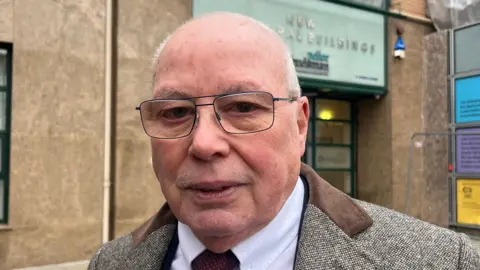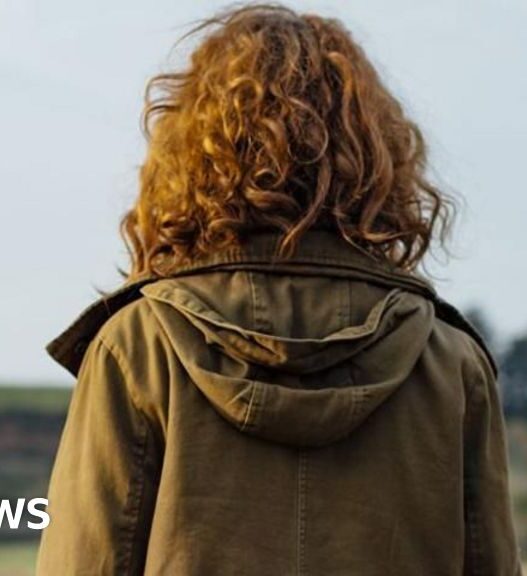 Pacemaker
PacemakerThere was “earnest endeavour” made to bring those responsible for the IRA’s La Mon bombing, in which 12 people died, to justice, a report by the Police Ombudsman of Northern Ireland (PONI) has found.
But it has been unable to explain why records from the original police investigation were lost.
The Police Ombudsman report details the findings of the investigation into the IRA attack on 17 February 1978.
PONI investigator Paul Holmes described the situation as “frustrating”.
He said: “My ability to provide a definitive view on the effectiveness of the investigation, including whether all lines of enquiry were pursued, has been hindered by the unavailability of certain documentation.”
In the attack, a bomb, placed outside a window, was attached to cans of petrol mixed with sugar, sending a huge fireball into the hotel, where 400 people were attending a dance.
Those murdered, all Protestants, included three married couples. More than 30 people were injured. They were attending an Irish Collie Club event.
‘Collusive behaviours not a feature’
Mr Holmes said missing documents is “a recurring, systemic issue in legacy cases and is not unique to this investigation”.
The missing documents have given rise to claims police protected some suspects because they were informants.
However, PONI found no evidence to substantiate the allegation.
Mr Holmes said: “The substantial police investigation files, associated documentation and intelligence records reviewed by this office, together with explanatory accounts from a number of former police officers and other enquiries, lead me to conclude that there was earnest endeavour by the RUC to bring those responsible for the bombing of La Mon to justice.
“I am of the view, based on all available evidence and information, that collusive behaviours were not a feature of the Royal Ulster Constabulary (RUC) investigation.
“The evidence and intelligence viewed by the Police Ombudsman’s investigation attributes responsibility for directing, enabling and perpetrating the bombing of La Mon House to the Provisional IRA,” concluded Mr Holmes.
PONI found the RUC investigation had been “compromised” by the acquittal, in 1980, of a man charged with the bombing.
The trial judge found he may have been tortured during his detention and in the absence of other evidence the case was dismissed.
Mr Holmes said there had been “a violation of the rule of law by the police officers involved”.
 Pacemaker
PacemakerThe ombudsman report follows an examination of a complaint made about the initial investigation by the Royal Ulster Constabulary (RUC).
It was submitted by Ulster Human Rights Watch (UHRW) and included statements from some of the bereaved families and survivors.
UHRW has pointed out that a 2012 review of the case by the Historical Enquiries Team revealed police interview notes had gone missing.
It has questioned whether IRA members were protected because they were working as state agents at the time or later.
‘Comprehensive and effective’
PSNI Assistant Chief Constable Ryan Henderson, of the Justice Branch, said the force acknowledges “the historic issues identified in the report concerning records management in this investigation”.
“However, this was at a time that predated the introduction of the computerised Home Office Large Major Enquiry System system.”
ACC Henderson said: “While the Police Ombudsman’s report has identified some investigative failings it also highlights that the investigation was well resourced, comprehensive and effective.”
He noted that the report “found that police held no intelligence prior to the attack that could have prevented it and also found that there was no evidence that any persons were protected from prosecution”.
‘I want to reach justice’
Andrea Nelson was 14 at the time her parents Paul and Dorothy were murdered at La Mon.
She said the atrocity was “needless” and that she and her sister Melanie have lived the last 46 years “with a big hole in our hearts”.
Speaking ahead of the report’s publication, she said: “I want to feel I have done everything I could to reach justice for my mummy and daddy and bring closure, if that’s possible.”
 Pacemaker
PacemakerAt a news conference following the report, Ms Nelson said victims and their families had waited too long for justice.
She said: “The loss of notes, records or exhibits, means that there continues to be missing pieces of the jigsaw.
“There was a failure to demonstrate adequately during the interrogation of a person that the confession that they made to their role in the bombing was safe and hence the opportunity to have justice was lost to us.”

Jim Mills, whose wife and sister were killed in the bombing, said he “was not expecting anything” from the report.
Mr Mills said he did not think he would get the answers immediately that he and his family required.
“It takes years and years and years of running to these places, it is not as if it will be next Christmas or next Easter,” he added.
He was seriously injured in the attack and described the impact on him and his family.
“I was left with a wee daughter at two and a half years old, my sister’s wee lad was three, another one was four and a half,” he said.
“I was in hospital for three to four months and when I got out I had to watch the heartbreak of my mum.”

‘Eerily quiet’
One of the reporters to attend the scene was former BBC News NI journalist Mervyn Jess – at the time he was in his second year as a junior reporter at a local newspaper.
“At that stage, I had no prior experience of, let’s just say, the Troubles at that level,” he said.
When he arrived, the flames from the fire were already being doused down.
He said there was a large plume of smoke hanging over the building.
“It was pitch black, all the electricity was out except for the arc lights of the fire brigade that were there lighting up the scene for their men to work.”
He was able to walk into the scene and explained that the victims had been taken to hospital at this stage.
Mr Jess said there was “no panic, no shouting or screaming” at this point.
“It was a little bit surreal in that respect, considering the magnitude of what had happened, that the whole place was eerily quiet.”
He added: “All I saw in front of me were the blackened brick walls that were still standing of the complex because the entire roof, which was a flat roof, and all the wooden structures around had collapsed on the ground level.”
Mr Jess said that a fire officer who was at the scene shouted at him to stop walking forward.
“He walked over to me and said: ‘Don’t take another step forward.’ He said if you do you’re going to stand on a body.
“All I could see was blackened, charred debris.”
 Pacemaker
PacemakerWest Belfast man Robert Murphy was sentenced to life imprisonment for manslaughter in 1981 and released in 1995.
But UHRW said others who were involved escaped justice, including those who planned it.
In a statement the day after the attack, the IRA admitted its nine-minute warning had been inadequate.





















